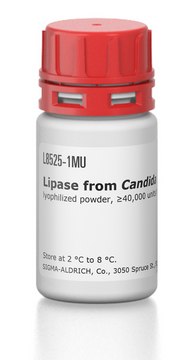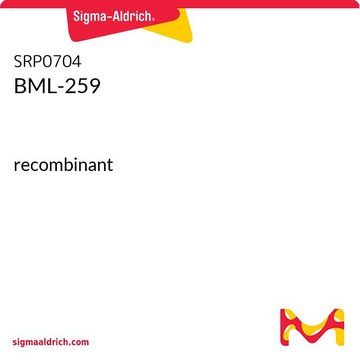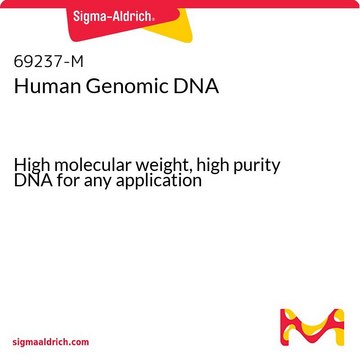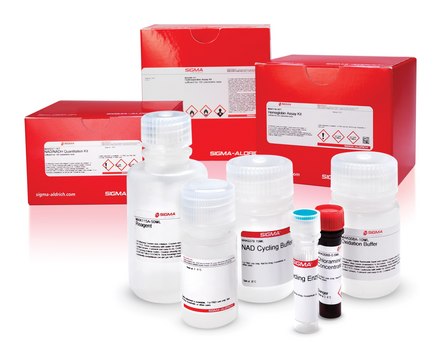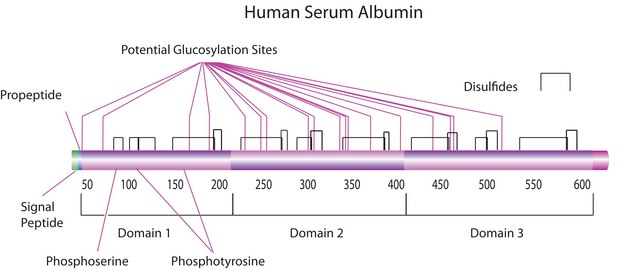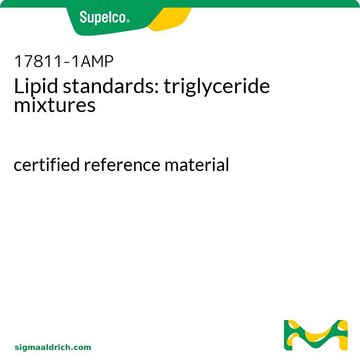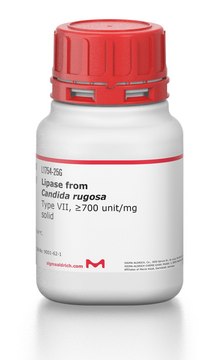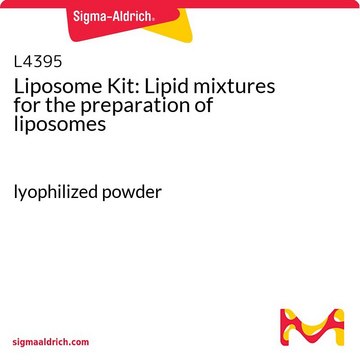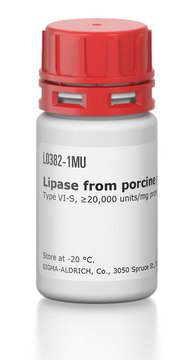P0932
Protein A-Agarose from Staphylococcus aureus
lyophilized powder
Sign Into View Organizational & Contract Pricing
All Photos(1)
About This Item
MDL number:
UNSPSC Code:
41106500
Recommended Products
form
lyophilized powder
Quality Level
matrix
Immobilized on 4% cross-linked beaded agarose
matrix activation
p-nitrophenyl chloroformate
matrix attachment
amino
matrix spacer
1 atom
capacity
30-40 mg/mL binding capacity (human IgG)
storage temp.
−20°C
Looking for similar products? Visit Product Comparison Guide
Application
Protein A-agarose is used for affinity chromatography, antibody purification and characterization, and protein A, G and L resins. Protein A-agarose has been used to study the effects of protein A immunoadsorption in patients with chronic dilated cardiomyopathy as well as to study multiple sclerosis and gastric cancer.
Quantity
Swelling: 1 g swells to approx. 4 ml.
Physical form
Supplied as lyophilized powder stabilized with lactose.
Storage Class Code
11 - Combustible Solids
WGK
WGK 3
Flash Point(F)
Not applicable
Flash Point(C)
Not applicable
Personal Protective Equipment
dust mask type N95 (US), Eyeshields, Gloves
Regulatory Information
常规特殊物品
Choose from one of the most recent versions:
Already Own This Product?
Find documentation for the products that you have recently purchased in the Document Library.
Guoxin Shen et al.
The Plant journal : for cell and molecular biology, 49(2), 228-237 (2007-01-24)
Animal CHIP proteins are chaperone-dependent E3 ubiquitin ligases that physically interact with Hsp70, Hsp90 and proteasome, promoting degradation of a selective group of non-native or damaged proteins in animal cells. The plant CHIP-like protein, AtCHIP, also plays important roles in
Xiaohong Shi et al.
Methods in molecular biology (Clifton, N.J.), 379, 137-148 (2007-05-16)
The membrane glycoproteins (Gn and Gc) of viruses in the family Bunyaviridae form projections on the virion envelope and are involved in virus entry and eliciting protective immunity. The glycoproteins are modified by N-linked glycosylation and accumulate in the Golgi
Laurent Garderet et al.
Leukemia & lymphoma, 47(7), 1340-1347 (2006-08-23)
This study evaluated the feasibility of using dendritic cells (DCs) to generate, ex vivo, anti-tumor cytotoxic T lymphocytes (CTL) in patients with stage III multiple myeloma (MM). Nucleated cells from eight patients who had received chemotherapy (three of whom had
K Klaamas et al.
Neoplasma, 55(2), 143-150 (2008-02-02)
All human immunoglobulins are glycosylated. The changes in IgG glycosylation are associated with autoimmune disorders and pregnancy. Little is known about IgG glycosylation in patients with cancer. A lectin enzyme-linked immunosorbent assay (LELISA) based method was developed for measuring the
Yu Ya Kit et al.
Biochemistry. Biokhimiia, 73(8), 950-956 (2008-09-09)
Immunoglobulins IgG and sIgA actively hydrolyzing histone H1 have been detected on analyzing proteolytic activity of antibodies isolated by chromatography on Protein A-agarose from blood serum of patients with multiple sclerosis and from colostrum of healthy mothers. These antibodies hydrolyze
Our team of scientists has experience in all areas of research including Life Science, Material Science, Chemical Synthesis, Chromatography, Analytical and many others.
Contact Technical Service